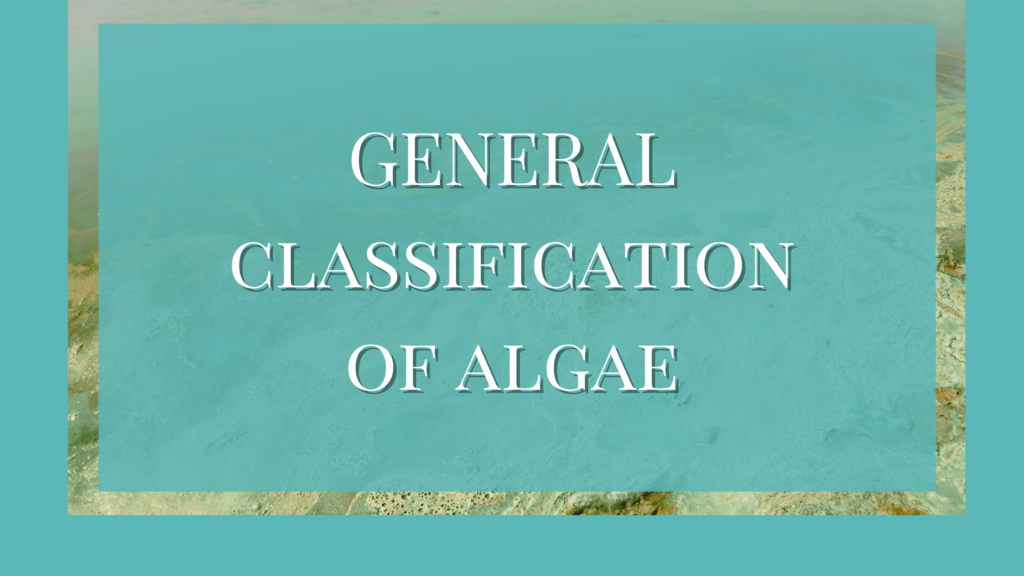Algae is one of the main sources of oxygen on the earth. They are useful to mankind in several ways. The economic importance of algae varies from being useful as a food to being a raw material in several industries. Here is a compilation of its major uses.
Economic Importance of Algae as Food for Humans
Most kinds of algae such as green algae, brown algae, and red algae are rich in nutrients such as vitamins and proteins. They have been used as a supplement from ancient times onwards. Each country uses algae differently or uses different types of algae in their food.
- Seaweeds: People in China, Japan, Thailand, Indonesia, Burma, etc, use edible seaweeds as they contain iodine and other vitamins.
- Porphyra contains proteins up to 25-30%, minerals like iodine, and vitamins such as B and C. It is a tasteful dish and is popular in England as well. Japanese people make soup out of it.
- Laminaria: Japanese cook Kombu with this algae. Laminaria is also used as an iodine source.
- Ulva is used in salad and is called sea lettuce in Scotland.
- Chlorella: Astronauts use it as a food substitute for its protein and lipid content.
- Spirogyra and Oedogonium are popularly used as nutrient supplements in India.
- Rhodymenia is used in European countries such as Scotland, Iceland, and Ireland as a food.
- In Japan, algae are used as a food-decorative item as well.
Algae as fodder for cattle
Algae with its nutrient content makes cheap but high protein food for animals. Several countries use various types of algae to feed their animals such as cows, pigs, poultry, etc.
Supplementing algal food increases milk and meat production in cows. Cows fed on algae as food yield higher concentrations of beneficial compounds in their milk and meat.
Liquid fertilizer was produced from concentrated seaweed extract.
- Brown algae or Kelps are fed to sheep and chickens in many European countries such as the UK, France, etc. It increases the number of eggs in poultry farming.
- Rhodymenia is popularly used in France and Norway as cattle fodder.
- Sargassum is used in China.
Algae is beneficial in pisciculture as well. Ocillatoria is among the popular algae fed to fishes. The algae types used as fodder for fish include Anabaena, Lyngbya, Merismopedia‖, Microcystis, and Spirulina.
- Microalgae and other types are used as feed for aquarium fishes.
- Diatoms are a popular choice for aquatic animals.
- Even frogs, tadpoles, and snails are also fed on algae.
Economic Importance of Algae as Medicine
Algae forms an excellent remedy for various diseases. They are also used to extract beneficial medicinal compounds to make medicines. Some of them can produce antibiotics and are beneficial for humans.
- Chlorellin from Chlorella inhibits bacterial growth.
- Diatom Nitzschia palea produces an antibiotic compound effective against E.coli because of its high iodine content.
- Seaweeds are used in goiter medicines. They are also beneficial for the gallbladder, kidneys, pancreas, and uterus. Seaweeds can also provide immunity against hay fever.
- Kelpeck from Kelps can treat Goiter and glandular issues.
- Agar-agar is used in ointments and pills.
- Polysiphonia contains compounds that are effective against gram-negative and gram-positive bacteria.
- Nitella and Chara are effective mosquito repellents. The latter can kill the mosquito larvae.
- Spirogyra is used as lens paper.
Economic Importance of Algae in Agriculture
The economic importance of blue-green algae is widely seen in helping reclaim barren alkaline soils. These algae can form a stratum on the soil during the rainy season, which will eventually reduce the soil alkalinity. This will further improve the soil fertility by adding nitrogen, phosphorus, and other organic matter into it. Algae that are used for this purpose are,
- Anabaena
- Aulosira
- Nostoc
- Scytonema
Other types of algae such as seaweeds can be used as soil binders that hold soil together and are used as liquid fertilizers in the field.
Economic Importance of Algae in Nitrogen Fixation
Blue-green algae are known as ‘natural nitrogen fixators’ which can fix atmospheric nitrogen in soil. Examples of such algae include Anabaena, Aulosira, Calothrix, Gleotrichia, Nostoc, Scytonema, Stigonema, Tolypothrix, etc. These algae improve the soil fertility and are grown in paddy fields. It is widely used in countries like China, Japan, India, Thailand, the Philippines, etc.
Algae as fertilizers
- Green algae increases soil fertility.
- Seaweeds are not just soil binders, they are also rich in potassium, phosphorus, calcium, and other trace elements useful for the growth of plants.
- Oscillatoria, Scytonema, and Spirulina are used in paddy fields.
- Chara remedies calcium deficiency in the fields.
- Fucus is used as manure for tubers in Ireland.
- The brown alga Sargassum is used as a liquid fertilizer that is rich in micronutrients. Both brown algae and red algae are rich in potassium.
Economic Importance of Algae in Industry
Algae are used as a chemical source in various industries to produce popular items such as alginates, agar-agar, carrageenan, diatomites, etc.
Agar-agar
Agar-agar- is a non-nitrogenous, dried, or jelly-like substance extracted from red algae. Japan is the largest exporter of agar-agar in the world.
- It is widely used as a culture medium in the laboratories. Its high melting point makes it convenient for lab usage as it solidifies at room temperature.
- Agar is useful as a thickening agent in food items such as ice creams, milk, candies, sauces, pastries, soups, jellies, etc.
- It is used in the manufacture of artificial limbs, leather, and silk.
- Agar is also useful as a lubricant in photographic films.
- Medicinally, agar has laxative effects.
Alginates
Alginates are alginic acids extracted from seaweeds and Laminaria. These are alginic acid salts seen in the cell walls of algae in Phaeophyceae. These are insoluble and can absorb water up to 200-300 times their weight. They are usually extracted from the primary walls and middle lamellae of red algae and brown algae. Alginates are used in
- Ice-creams
- Non-inflammable wrapping film
- Production of flame-resistant fabrics
- Surgical dressing
- Waterproofing concrete
- Sodium alginate in waterproof dyes and materials
Carrageenan
Carrageenan is taken from the cell wall of red algae. This is a sulfated polymer of galactan. It is taken by boiling the chosen algae in 100 times water. Upon boiling, carrageenan is dissolved in water. It is later mixed with charcoal and finely filtered. The final product is a gel-like material, carrageenan. It is mainly extracted from Chondrus crispus and Gigartina.
- Carrageenan is widely used in pharmaceutical industries as an emulsifier.
- It can be used as a cough remedy.
- Used in the production of stabilizing products or gel products.
- It is useful in the leather industry as a binder
- In the brewing industry, to remove excess protein in the wort to produce brighter beer.
- Used in the textile industry as a sizing and stabilizing agent for design printing with dyes.
Diatomite
The economic importance of diatoms is seen mainly in the form of diatomite. Diatomite is a soft powdery substance with a porous texture. They are light-coloured and easily friable. They are sedimentary rocks formed due to the accumulation of silica remains of dead diatoms. Their fossil remains reveal that, they contain a pair of symmetrical frustules or shells. Diatomite is popularly known as diatomaceous earth which is used in various ways.
- In ancient times, diatomites were used in the making of dynamites. It worked as an absorbent for nitroglycerin.
- It is used in the brewing industry as a filter that removes impurities that make beer look cloudy.
- Diatomite removes color from sugar cane and is used in the sugar industry.
- Diatomite adds bulk to paint and extends pigmentation to promote better adhesion of paint to the surfaces.
- Diatomaceous earth added in toothpaste provides extra abrasion to remove plaque. It works in the same manner as polish metals and in face scrubs.
- The abrasive effect of diatomaceous earth works on insects to cause drying out of the insect exoskeleton and thus works as an excellent insecticide.
The red algae Gloiopeltis furcata is used in the manufacture of a type of glue called Funori in Japan. It is used as a sizing agent in making cloth and paper. Kelps are used as a source of iodine, alginic acid, potash, and soda.
Algae as biofuel
Biofuel from algae has been a prime alternative for energy sources. They are used as a source of oil that is extracted from them and later refined into biofuel.
The fuel prospects include gasoline, jet fuels, and diesel. Biofuel from algae is non-toxic, does not contain sulfur, and is completely biodegradable. Using algal biofuel reduces carbon dioxide emissions.
Questions Asked
- Write the economic importance of algae
- Write a note on the economic importance of algae




